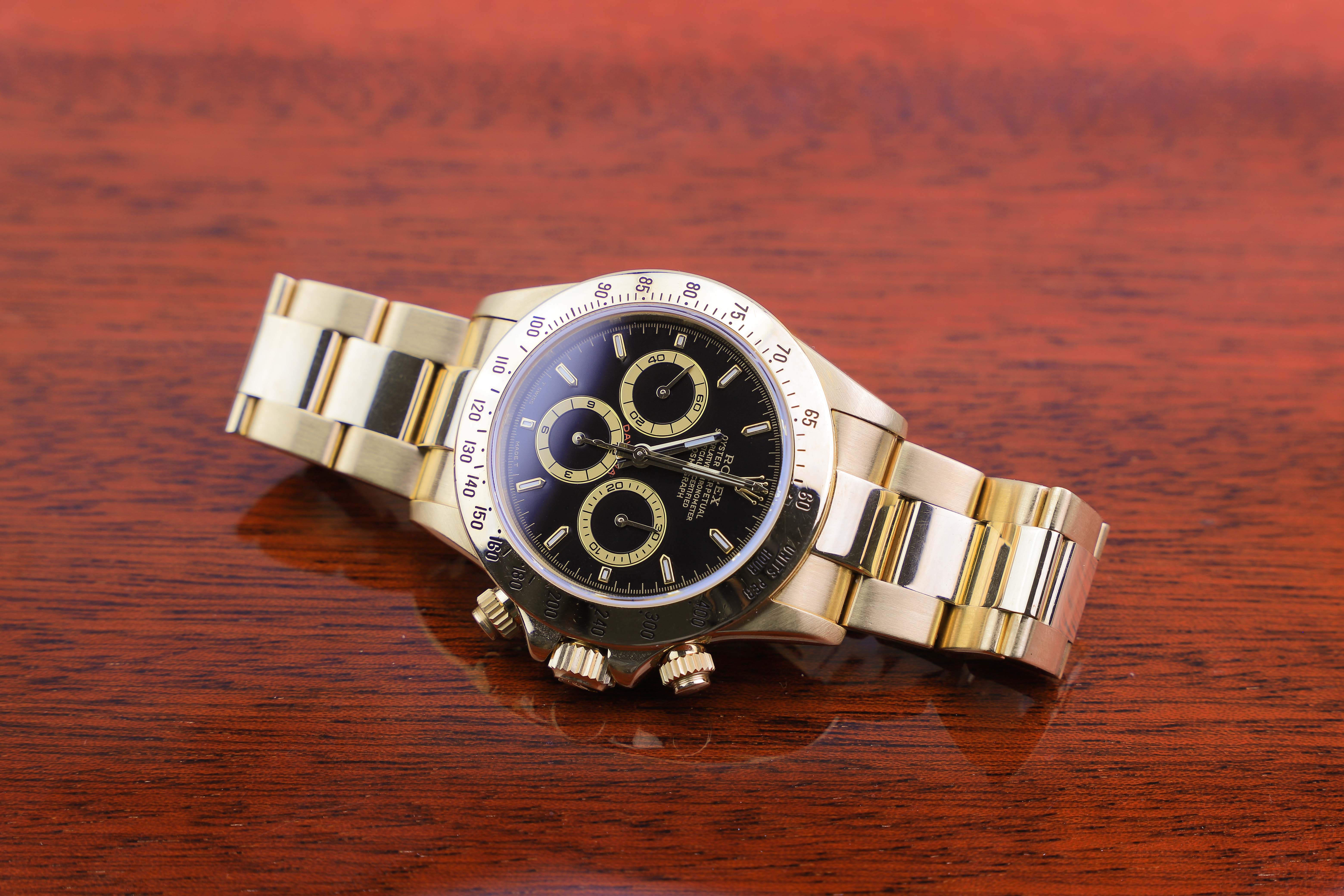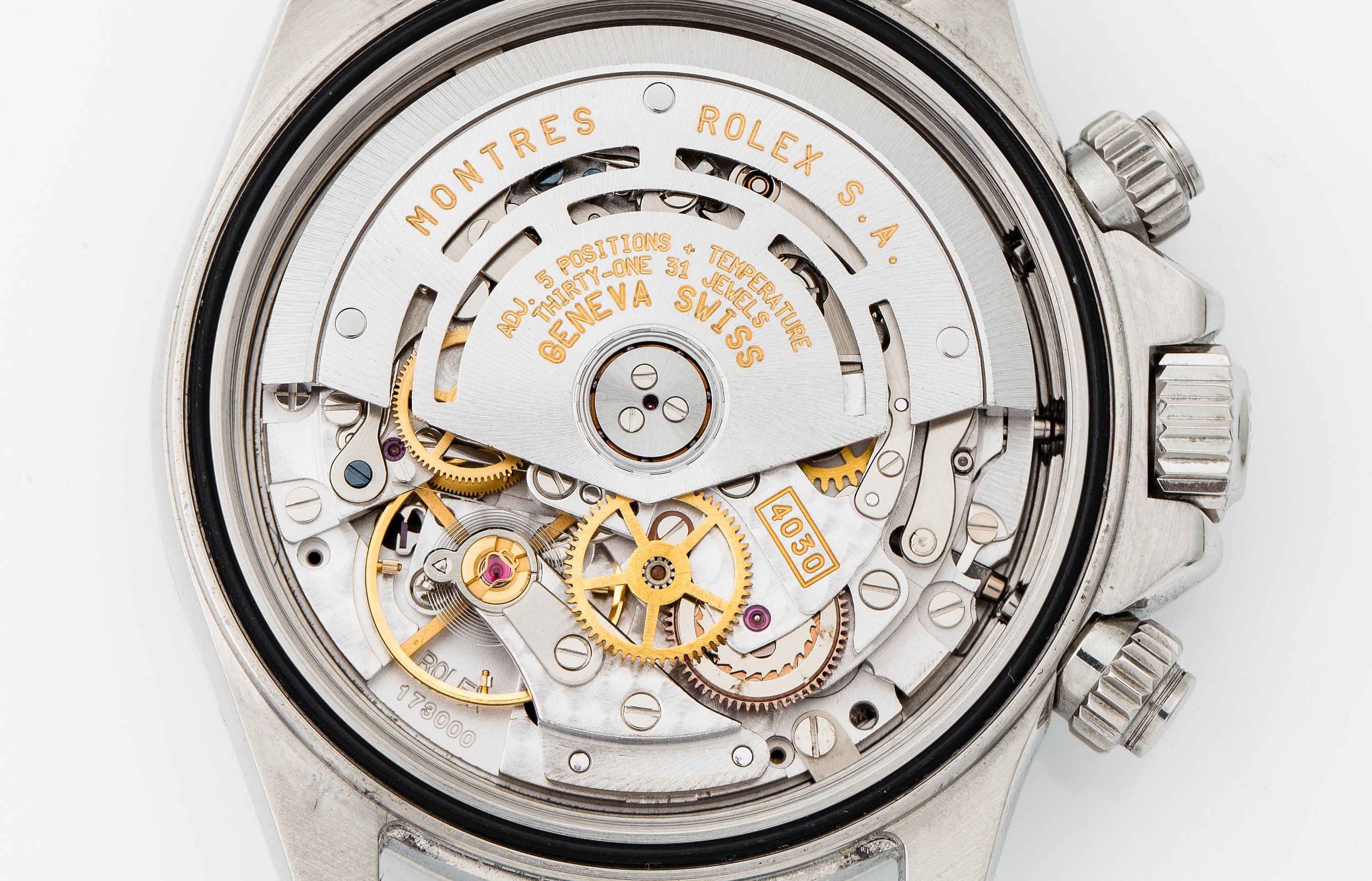
Rolex Caliber 4030 Complete Guide
The Caliber 4030 is one of the most legendary calibers from Rolex. And yes, it has something to do with the fact that it is used in one of the most legendary watches from Rolex – the Cosmograph Daytona. But that’s far from all there is to it.
The Daytona model Itself has an interesting and appealing history. But the fact is that a lot of focus when talking about the Daytona is actually on the movement. Something that isn’t necessarily the case for other Rolex models.
In this article, we will go in-depth on the Rolex caliber 4030 – a caliber used in the Cosmograph Daytona.
Rolex Caliber 4030
The story of the Daytona dates back to 1963 when Rolex released its first Daytona model. Named after Florida’s Daytona International Speedway, it was born to have a close relationship with motorsport. The story of Rolex chronographs, however, dates much further back than that. To about the late 1930s. But when the Daytona launched, it wasn’t an instant success. In fact, far from it. Stories about how Rolex retailers offered a complimentary Daytona when buying something else have been told in recent times, and this just goes to show that the Daytona was far from a successful model when it was released.
So how did it come to get the iconic status and popularity it has today? Much of the answer lies in the movement.
The first Daytona that was released was fitted with a manually wound caliber from Swiss ébauche manufacturer Valjoux. Whilst there is nothing wrong with a Valjoux movement, the fact that Rolex decided to introduce a manually-wound movement when automatic watches have come to become the norm in watchmaking as they brought the benefit of not having to constantly manually wind it. In that sense, with the manual wind movement, the Daytona was, upon its launch, far from a revolutionary model. More so the opposite.
With that said, one of the primary reasons the Daytona wasn’t a hit was because it didn’t feature an automatic movement. The primary reason Rolex didn’t use one, however, was because making an automatic chronograph wasn’t an easy technological feat. A brand that succeeded with this, however, was Zenith. Now iconically known for its chronograph movements – more specifically the El Primero Caliber – Zenith beat Rolex to it, and became a leader in making chronographs.
Rolex, which didn’t have the same strict mindset of only using in-house calibers at the time, of course, recognized the El Primero caliber, and the rest is history.
In 1988, Rolex introduced a self-winding Daytona, the reference 16520 using a movement based on the Zenith Caliber 4030.
The Rolex Caliber 4030 is, unlike what the name suggests not an in-house movement, but is actually based on the Zenith El Primero Caliber. So why did Rolex give this movement a new name that suggests that it is an in-house caliber? Because Rolex did not simply take the movement as it was and put it into the Daytona, which was the standard practice when using externally sourced movements.

Instead, Rolex made significant changes and modifications to the movement so that, essentially, it became a completely new movement. In fact, Rolex made roughly 200 modifications to the Zenith El Primero Caliber before satisfying with it. This meant removing superfluous parts and changing more than half of the parts in it that, in Rolex’s eyes would make it more reliable and durable.

The modifications meant keeping only about 50% of some 400 parts that were originally in the Zenith El Primero Caliber. Furthermore, to increase its long-rating durability, Rolex reduced the operating frequency of the high-beat Zenith caliber from 36,000 beats per hour to 28,800, which is the standard for all Rolex calibers today. This would mean less wear on the parts, and thus longer service intervals.
Furthermore, Rolex removed the date function of the movement and fitted it with a new escapement – the free-sprung Glucydur balance wheel and Microstella regulating. And like all Rolex movements at the time, it was equipped with a Breguet overcoil instead of the flat hairspring originally used in the El Primero.

Unlike the previous Daytona, the reference 16520 released in 1988, became an instant success. Recognized for its impressive craftsmanship of caliber, and backed by the reputation of the El Primero Caliber, the watch was very well met.
Rolex Caliber 4030 specifications
The Rolex Caliber 4030 was in production for a long time. In fact, some 12 years, until an updated caliber, now fully in-house, the Caliber 4130 was introduced.
This just goes to show that Rolex was satisfied with the performance of the 4030 and didn’t see a need to update it too early. Plus, developing a completely new chronograph movement from the ground up is not cheap nor easy. And as you know, Rolex is all about not changing a proven concept unless absolutely necessary. With the discontinuation of the 4030, it became the last non-in house movement to be used by Rolex.
The Caliber 4030 is equipped with a column wheel and horizontal clutch.
- Caliber reference: 4030
- Base: Zenith El Primero 400
- Perpetual rotor. Bidirectional.
- Diameter: 30.5mm
- Jewels_ 31
- Frequency: 28800
- Technology: Column wheel, Chronograph, small-seconds, horizontal clutch, Breguet Overcoil, free-sprung Glucydur balance wheel, and Microstella regulating.




